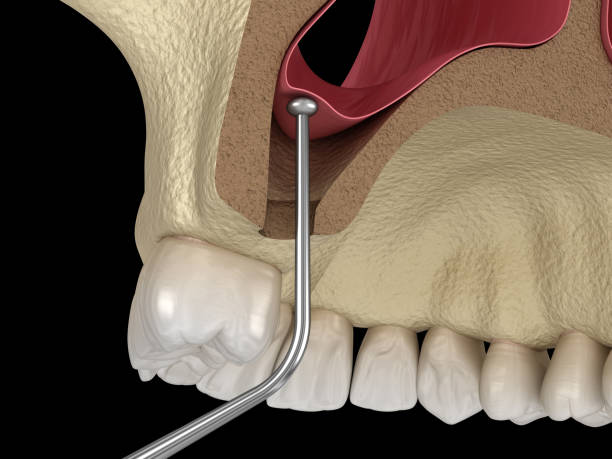Sinus Lift
The maxillary sinuses are located behind your cheeks on the top of the upper teeth. These sinuses are empty, air-filled spaces and can vary in size. Some of the roots of the natural upper teeth extend up into the maxillary sinuses and when they are removed, it leaves just a thin wall of bone separating the maxillary sinus and the mouth. If the sinus wall is too thin, a sinus lift may be necessary. Because the key to long lasting dental implants is quality and quantity of bone to hold them in place, we need to create a site that will achieve this by lifting the sinus floor to allow more room for bone growth.
This is another common procedure associated with dental implants that can be a result of bone loss from injury or periodontal disease.

Am I a candidate for a sinus lift procedure?
A sinus lift may be necessary if you:
- are missing more than one tooth in the back of your jaw
- are missing a significant amount of bone in the back of your jaw
- are missing teeth due to a birth defect or condition
- are missing most of the maxillary teeth and require support for dental implants
How is a sinus lift accomplished?
A small incision is made in the premolar or molar region to expose the jawbone. An opening is created, and the sinus membrane is gently pushed upward. The space is filled with bone grafting material, either from the patient’s body, other sources, or synthetic materials. The incision is then sutured, and the healing process begins. Over several months, the graft integrates with the jaw, creating a stable foundation for dental implants. If sufficient bone is present, the sinus lift and implant placement may be done simultaneously. Otherwise, the graft must mature for several months before implants can be placed.
Sinus augmentation allows many patients to receive dental implants who previously only had the option of loose dentures. This procedure is typically performed in-office under local anesthesia, with sedation available for added comfort.